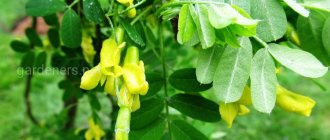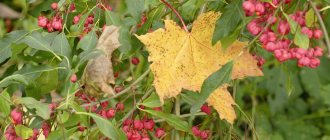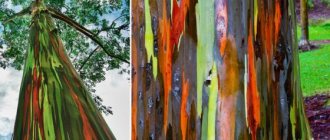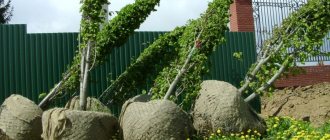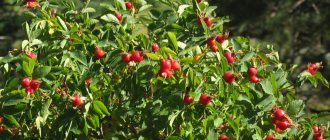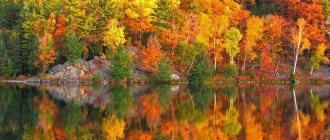Almonds low
Low almond, steppe almond, dwarf almond - all these are names of the same plant - a low, slow-growing deciduous shrub that belongs to the Rosaceae family.
It is very decorative, and not only during flowering. In addition, the shrub has medicinal properties, produces a bountiful harvest and is easy to care for. Steppe almonds winter safely without shelter even in Siberia.
The plant blooms in April for several weeks. Numerous soft pink flowers with a diameter of 2-3 cm bloom on the branches simultaneously with green lanceolate leaves. They have oval petals 10-17 mm long.
Crassula
The money tree is common in home floriculture. The name comes from the fact that its leaves look like coins. They have a round shape, which is due to their ability to accumulate moisture and nutrients. Indoor succulent grows up to 2 meters in height. Crassula propagates by cuttings.
It needs to be replanted once every two years. A weak root system is not able to support the weight of an adult plant. A deep pot with thick walls is suitable for replanting, which will not allow the fat plant to fall.
The tree needs regular watering: the water should be settled and warm. Crassula is a shade-tolerant plant. With a lack of lighting, it changes shape. Its stems stretch out and become thin. Direct sunlight is contraindicated for her. This causes the greenery to wither and begin to fall off.
Forsythia, or forsythia
Sunny forsythia can be found in many cities; this bright shrub adorns city parks and areas near residential buildings. Yellow bell-like flowers appear in April even before the leaves bloom. And if you cut forsythia branches in February and put them in water at home, then after 2 weeks you will get a miniature golden beauty in a vase.
- Forsythia
A sunny shrub that is one of the first to “wakes up”.
- Forsythia: all about planting, care and propagation
In winter, spring and summer - it is always a different color! We talk about how to properly care for forsythia.
Dracaena
Tropical dracaena is called the dragon tree: “dracaena” means dragon in Latin. An adult plant looks like a palm tree. The leafless stem ends in a tuft of long leaves bent downwards. Dracaena belongs to the asparagus family. In nature there are up to 40 plant species. The following varieties are common in home floriculture:
- fragrant;
- bordered;
- Derema;
- Sandera;
- godsefa;
- bent.
Dracaena is extremely popular among gardeners. At home, with proper care, it lives 12-15 years. Looking after her is not much of a hassle. A newly purchased dracaena needs to be transplanted from a cramped pot. As the root system grows, replanting must be repeated.
Dracaena loves diffused sunlight, like in the tropics. It should be placed near a south window, shaded by light curtains. The southern beauty cannot stand cold and drafts. In unfavorable conditions, the leaves begin to turn yellow and fall off.
Spiraea spring blooming
Spiraea oakleaf
In spring, spireas oakleaf, Arguta, gray, alpine, crenate, three-lobed, Thunberga, etc. bloom. Numerous white flowers appear on last year's shoots in May. Flowering lasts about a month. However, shrubs look most impressive in spring only if they grow in a sunny area. In the shade the flowers become smaller.
- Spiraea is a real decoration of the site
Types of spirea are divided into spring-flowering and summer-flowering. Which ones are better to choose?
Planting, propagation and care
Household trees in pots wonderfully decorate the interior of an apartment or house. In order for plants to bloom and delight their owners, they need optimal care. Proper replanting, planting, watering and fertilizing are the key to healthy greenery.
The seedling brought from the store needs to be planted in a spacious pot. For replanting, soil specially selected for this variety is suitable. You should choose in advance the place where the flower pot will be located. It is necessary to take into account all the nuances. Some plants are afraid of sunlight, while others, on the contrary, cannot tolerate shade. At first, the seedling needs regular watering. To do this, it is better to use settled water at room temperature.
House flowers are propagated by seeds and cuttings. To get a cutting, cut off a leaf or part of the stem located on top. The cuttings are placed in a uniformly moistened earthen mixture. To create a greenhouse effect, the cuttings are covered with a glass jar.
When choosing an indoor tree, you need to familiarize yourself with the features of its cultivation in advance. In this case, the plant will delight its owners with its appearance for many years, delivering aesthetic pleasure and purifying the air.
Rhododendron
Rhododendrons belong to the Ericaceae family. These small trees and shrubs are found throughout the world, but are especially popular in China and Japan. Rhododendron flowers are collected in multi-flowered inflorescences of various colors: pink, purple, red, orange, yellow, white. They bloom in May, and at this time it is impossible to take your eyes off the rhododendron.
In the middle zone, the most winter-hardy and unpretentious rhododendrons are grown: Katevbinsky, Daurian, Vazeya, golden, Caucasian, pointed, Japanese. Only their heat-loving varieties need shelter, and species plants tolerate even harsh winters well.
- Winter-hardy rhododendrons - 10 most beautiful varieties with photos and descriptions
Frost-resistant rhododendrons for open ground.
- Rhododendron katevbinsky
One of the most beautiful flowering shrubs that overwinters with green leaves.
Flowering trees are a magnificent highlight of the garden
It can be difficult to create a green area in your backyard. Therefore, designers advise choosing plants that will harmoniously combine with each other.
In addition, a number of nuances should be taken into account:
- tree sizes;
- flowering period;
- color of bud petals.
It turns out that nowadays it is quite easy to choose beautifully flowering trees that bloom in early spring or summer. In addition, buds of various tones and sizes appear on the branches. However, it should be remembered that the main element of the garden landscape are perennial and annual flowers. Therefore, ornamental trees must fill the “pauses” that occur between their bud periods throughout the season. When arranging a garden, you need to remember the main goal. Some people like fruit crops, others prefer lush aesthetics and aroma. A detailed acquaintance with the crops available in your area will help you make your choice.
Careful study of the external features and conditions of plant maintenance is the basis for creating a wonderful garden.
Almond trees bloom in early spring
The Mediterranean is considered the birthplace of culture. Currently, it is grown on the American continent, in Europe, China and the Caucasus. The plant belongs to the genus “Plum” and the family “Pink”. An adult crop grows up to 6 m in height, and the rhizome penetrates quite deeply into the soil. Thanks to this, it easily tolerates drought.
The almond crown is formed by generative (short) and vegetative (long) branches. Petioled leaf plates with pointed edges bloom on them. In early spring (March-April), the buds, consisting of five graceful petals, begin to bloom. Their diameter reaches approximately 2.5 cm. A bright tree with pink flowers looks great against the backdrop of a “sleeping” garden. It gives it a certain solemnity and “reminds” the arrival of spring.
Since almonds love a temperate climate, in mid-latitudes they are reliably covered for the winter. And in St. Petersburg, Vologda and the steppe zone of Siberia, it is desirable to grow frost-resistant varieties.
Blooming magnolia trees
The tree is considered the most picturesque specimen on earth. After all, it is covered with delicate buds almost all summer. Most magnolias grow in southern countries where there are no severe frosts. Fortunately, some species of this tropical flowering tree do well in fairly cold regions. In its natural environment, the plant is found in North and South America, on the islands of Java and Sumatra. It is also successfully cultivated in Europe. For example, in the Kiev Botanical Garden, biologists grew over 40 species of magnolias.
The plant is an evergreen crop. The trunk and branches, covered with gray bark, form a pyramidal crown. The foliage is oval shaped and rich green. Immediately after falling, new specimens appear on the branches, so magnolia is always in trend.
Particularly impressive is the period when a tree with flowers attracts hundreds of insects. Depending on the variety, the buds are painted in the following colors:
- snow-white;
- light pink;
- purple;
- cream.
The petals are collected in a wide figured bowl, from which a delicate aroma emanates. After pollination, cone-shaped leaflets are formed on the branches, giving the tree a special decorative appearance.
Frost-resistant varieties of magnolia include: “Siebolda”, “Zvezdchataya”.
Sakura
Among popular flowering trees, Japanese cherry occupies a special place. In mid-spring, it attracts the attention of millions of people. They watch with delight the lush pink clouds that hover in the cozy alleys of Paris, New York, Hamburg and Tokyo.
Biologists count more than 400 varieties of this unique tree. The most popular are:
- "Kanzan"
- "Kiku-Shidare";
- "Tai Haku";
- "Royal Beauty".
Each of them has its own characteristics. Some grow up to 5-7 m, others barely reach 2 m. However, all trees have a thick, lush crown, abundantly strewn with many pink buds. Inflorescences come in both simple and double shapes. Inedible fruits are formed in place of numerous bouquets. Despite their Japanese origin, frost-resistant varieties of sakura successfully take root in the middle zone.
When planting Japanese cherry trees, it is advisable to choose open, well-lit areas without drafts.
Delonix royal
For its bright outfit, this unique tree with red flowers is called the flaming tree, flame and fire tree. Its homeland is the island of Madagascar, where the crop is found in dry forest plantings. Despite this exotic origin, Delonix regalis is grown in various parts of the world.
The tree has a spreading, wide crown that saves its fans from the heat. Adult specimens reach 9 m in height. During flowering, the culture puts on a bright outfit of many buds. They consist of 4 petals directed in different directions. The length of each of them is approximately 8 cm. In the middle latitudes, Delonix royal is used as a tub crop or bonsai.
Delonix royal miraculously tolerates drought, but at low temperatures it immediately loses its foliage.
Flowering cassia trees
The culture is considered a close relative of the Chinese brown tree. It belongs to the famous Laurel family. In nature, cassia grows up to 15 m in height. On its numerous branches grow oval-shaped leaves with a glossy surface.
During flowering, the cassia crown is completely covered with many buds, collected in elegant bouquets. Due to its bright color, the plant is often called a tree with yellow flowers or golden shower. They bloom at the end of spring. The diameter of one bud reaches 20 cm. The length of the inflorescences is approximately 40 cm.
Jacaranda (violet tree)
There are about 50 varieties of culture in nature. South America is considered its homeland. There, jacaranda grows in dense thickets of tropical forests. This detail indicates that the plant loves an abundance of heat and moisture.
The violet tree with lilac flowers has an erect trunk with gray bark. Its maximum height reaches 15 m. Numerous branches form a spreading openwork crown. Young shoots are covered with thin red bark, which gives the crop a special decorative appearance.
The foliage, up to 30 cm long, has a complex shape and consists of many small plates. At the appointed time (summer and autumn), elegant fragrant lilac or purple buds form on the branches. They consist of five petals and decorate the tree for 8 weeks, emitting an intoxicating aroma.
The violet tree is suitable for regions where winter temperatures drop to 0°C.
Galesia
The luxurious lily of the valley tree belongs to the Styrax family. Its homeland is North America, where the crop grows up to 30 m. In the gardens of our compatriots, a tree with white flowers, a photo of which reveals its pristine beauty, grows only up to 3 m in height. It has a neat pyramidal crown. The branches are decorated with long foliage of dazzling green color. At first it has a light green tint, and then acquires darker tones.
The large buds of the lily of the valley tree really resemble the flower of the same name. They are distinguished by their bell-shaped shape and drooping structure. The inflorescences begin to shine even before they are completely freed from gray scales. From the outside, galesia resembles a bride in a snow-white dress. Flowering begins in late spring and lasts about 2 weeks. The spectacle takes place against the backdrop of the lush greenery of the garden, so it remains in the memory until the next season.
The lily of the valley tree opens its buds for the first time when it is 6 years old.
Albizia
A unique silk tree originally from China will become the pearl of your summer cottage. It feels comfortable in latitudes with a temperate climate. Albizia looks especially impressive during the flowering period. For this reason, it is called an exotic Chinese tree with pink flowers or spring mimosa.
Under natural conditions, the culture grows up to 10-15 m. It has:
- several main trunks;
- low spreading branches;
- fern foliage.
Lush pink buds are evenly distributed throughout the entire crown of the albizia. They appear in mid-spring. The last inflorescences mark the beginning of autumn. The life cycle of a silk tree lasts approximately 20 years.
Popular varieties of albizia:
- "Alba" (snow-white buds);
- "Bubri" (bright pink inflorescence petals);
- "Summer Chocolate" (distinguished by burgundy foliage).
The plant is actively used in the formation of stylish landscapes. It is found in city parks and country gardens. Silk wood makes stylish alleys.
It is advisable to grow the crop in areas where relatively mild winters are observed.
We got acquainted with the original flowering trees, which are often so lacking in a summer cottage. They come in different sizes. The petals of the buds are colored white, red, yellow and pink. Crops will add uniqueness to the landscape if you choose an option suitable for your climate. Let our gardens turn into a cozy oasis of pleasure where you can taste a Bounty chocolate bar.
Barberry Thunberg
This deciduous shrub with branching shoots is primarily famous for its bright red berries, which decorate the plant from mid-summer to late winter. But the reddish-yellow flowers are no less spectacular. They bloom at the end of May and bloom for 10-12 days.
Barberry Thunberg also has decorative small leaves. In species plants they are bright green (scarlet in autumn), and in varietal specimens they can be yellow (Aurea), brown (Bagatelle), purple with edging (Golden Ring), variegated (Rose Glow), etc.
- Barberry Thunberg
A charming shrub with bright red berries and variegated foliage.
Bonsai
It is a miniature copy of a tree. The idea of growing dwarfs in pots came to us from China. Asian bonsai is not just a small flower in a pot. It is an object of art and the embodiment of living sculpture. Growing miniature trees is a kind of ritual, the purpose of which is to create a smaller copy of nature.
Growing bonsai requires special skills and patience. Coniferous and fruit trees, as well as specimens with small curly leaves, are suitable for propagation. Beautiful bonsai are obtained from climbing willow and birch. A rooted seedling is planted in a pot. Lawn grass is sown around it for aesthetics. For several years, the Christmas tree or birch tree is well looked after, giving it the desired shape. This is achieved by pruning old branches and pinning new shoots. All this time, the bonsai needs to be watered in a timely manner and fed as needed. If you monitor the growth of shoots and regulate their growth, over time you can get an elegant dwarf mini-tree.
Magnolia
Deciduous forms of magnolia bloom in April-May, and the flowers bloom before the leaves appear. The most popular spring-flowering magnolias are holly, naked, star, Kobus, Soulange, Loebner. It is noteworthy that in mid-summer these shrubs can bloom again.
Magnolia flowers are pink or white and very fragrant. Depending on the type, they can be small or large (up to 20 cm in diameter).
- Magnolia hybrida George Henry Kern
Spring-blooming shrub with delicate fragrant flowers
- Magnolia Kobus
A cold-resistant magnolia whose spring blooms are simply mesmerizing.
- Magnolia star
The shortest plant of the Magnolia genus, on which numerous stars “light up” in early spring.
- 7 popular types of magnolia for your garden
Magnolias that will not leave you indifferent.
Ficus
There are more than 20 species of domestic trees of the ficus genus. They vary in shape and appearance. An unpretentious plant does not require frequent watering and feeding. It cleans the air well, neutralizing benzene, formaldehyde and other harmful substances. Some ficus trees are poisonous. They should not be kept in a home where there are children and pets.
Ficus rubber produces volatile substances that are harmful to asthmatics. It is not recommended to place it in the bedroom and nursery.
Ficuses with large, juicy greens forming a dense crown look beautiful in the interior. The following varieties of ficus are optimal for home interiors:
- Ficus Benjamin;
- rubbery;
- lyre-shaped;
- Ficus Binnendieck;
- ampelous;
- Bengal;
- dwarf;
- bottle.
Ficus is one of the most common indoor plants. It can often be found in apartments and offices. To make the flower look healthy, it is enough to water it abundantly from time to time.
Tree peony
Large spherical buds (15-25 cm in diameter) appear on the bush in the second half of May and do not fade for about two weeks. Double or semi-double flowers can be white, soft lilac, pink, crimson or lilac with a dark crimson spot at the base.
In ornamental gardening, the most common hybrids are subshrub peony. They have long feathery leaves and white, pink, lilac or red flowers with a diameter of 25 cm.
- Everything you need to know about peonies in one article
We have collected all the most useful tips on planting, growing and propagating peonies. Enjoy reading!
- 9 fantastically beautiful varieties of tree peony
Magnificent peonies that will take your breath away!
- Tree peonies - planting and care
Don't know how to plant and grow a tree peony? We'll tell you!
Hovea
Howea perennial belongs to the palm family. Under artificial conditions, the trunk, covered with ring-shaped scars, grows to the ceiling. The feathery leaves form a shady canopy. Khoveya is withering away from lack of light. It should be located in a spacious room, closer to the windows facing south. Watering should be moderate in winter and abundant in summer.
Palm trees do not tolerate dry air well. From lack of moisture, its leaves begin to turn yellow. From time to time, the greens need to be sprayed with water at room temperature. It is important not to allow the lump of earth in the pot to dry out. To prevent this from happening, in the event of a long absence, an automatic watering system is necessary.
The perennial palm grows to gigantic size, spreading its feathery leaves widely. It should be located in spacious rooms. Green beauty cleans the air well. Its leaves are safe for animals and small children. Khoveya can be placed in a spacious nursery.
Decorative apple tree
This tree is grown not for its harvest, but to decorate the garden. White, pink or purple flowers appear on the plant in May, and in autumn and winter the tree is covered with small red apples. The leaves are no less attractive: in many specimens they are burgundy or purple.
In landscape design, decorative apple trees of the Royalty, Helena, Everest, Royal Beauty, Rudolf varieties, as well as the Niedzvetsky apple tree are most often used.
- Decorative Niedzwiecki apple tree
A tree that, when in bloom, fills the garden with an intoxicating aroma.
Types of indoor trees and breeding conditions
Large plants in tubs perfectly decorate the interior. With proper watering, they provide lush greenery all year round. Of the existing species diversity, preference is often given to some variety that is undemanding in care. We’ll tell you in more detail about which specimens can be bred at home.
With constant employment, spending free time on hobbies and hobbies is an unaffordable luxury. Unpretentious varieties that do not require special conditions for growth and flowering are popular among apartment and house owners. The following varieties are common:
- citrus fruits (lemon, tangerine, orange, kumquat);
- exotic (breadfruit, bamboo, shefflera);
- ficuses (Benjamina, Bengal, rubber);
- palm trees (date, banana, rapis);
- bonsai (pine, spruce, sakura);
- flowering (hibiscus, abutilon).
The owners decide for themselves which species to give preference to. When making a choice, you should take into account the nuances. You need to determine in advance where the flower pot will be located. For the plant to be healthy, there must be enough lighting in the house. You should choose a flower carefully if there are small children and animals in the house. Some of the plants contain harmful substances that are hazardous to health.
Rose hip
This bush is also known to both old and young. Wild roses bloom on the bush at the end of May and emit a pleasant aroma. The plant is unpretentious and does not require watering, but for lush flowering it needs a sufficient amount of light.
- Rose hip
A popular plant with fragrant flowers and medicinal fruits.
This article features mainly plants that bloom in May. But this does not mean that in April most trees and shrubs are still “sleeping”. We just decided not to repeat ourselves, since we have already written about “early birds” before. If you missed these materials, take a look at the articles:
- 10 ornamental shrubs and trees that bloom in early spring.
- Top 16 primroses among shrubs and trees.
Indoor eucalyptus
Medicinal eucalyptus is a useful home plant. It effectively purifies the air, making it healthier by releasing phytoncides that kill harmful bacteria.
Eucalyptus of the myrtle family was brought to us from Australia. At home, the plant takes on a compact pyramidal shape. It stretches up to 150 cm in height. Eucalyptus loves sufficient lighting and moderate watering. Resistance to diseases and pests is its characteristic feature. Young eucalyptus needs to be replanted annually. During the period of active growth, it must be fed twice a month.
Evergreen shrubs for hedges
Evergreen shrubs allow you not only to admire the beauty of hedges all year round, but also to have a permanent “fence”. If you plant deciduous plants, then the fence will be visible from the street all winter, and the bare trunks will look dull.
The most popular evergreen shrubs:
- Juniper. Evergreen hedges made from this coniferous plant purify the air from dust and poisons. The needles exude phytoncides, which make the air healing. Covers the area well - the area is not visible from the street. Flower beds and lawns look beautiful against the background of pine needles.
- Boxwood. Shrub with small glossy leaves. The leaves grow very densely; with the help of pruning, the bushes can be given a variety of shapes. The plant is unpretentious, slow growing. Some types of boxwood live up to 500 years; boxwood hedges can reach a height of up to 5 m.
- Laurel cherry. Bushy tree with dark green leathery leaves. Grows up to 8 m in height. Lives up to 100 years.
- Japanese holly. Bush or tree up to 5 m high. Leaves are dark green, shiny.
- Heather. The bushes are highly branched, reaching a height of 20-80 cm. Heather is used for borders and low hedges.
Perennial shrubs used for landscaping are versatile plants that can be used to achieve a variety of purposes. Thanks to the abundance of species and varieties, everyone can choose plants to their taste and in accordance with their goals.
Campsis in landscape design
Compositions featuring flowering vines can transform a garden plot beyond recognition. No wonder it has been used for decoration in landscape design for hundreds of years. In most cases, it is used as vertical gardening. When pruning, you can form a real flowering tree or bushes. The main tool for creating compositions is a pruner, decorative elements and imagination.
Share
Beautiful weigels: varieties
- Weigela purpurea is a 150 cm tall shrub with a lush crown. Blooms in June-July.
- Alba is a dwarf form. The flowers are white and turn pink when they fade.
- Weigela Victoria is a bush one meter high. Blooms crimson.
The best time to plant weigela is spring. The seedling must be at least three years old. If you plant a shrub in the fall, then after the first winter it will certainly die.
Before wintering, after leaf fall, a layer of soil should be poured into the tree trunk circle. Bend the branches to the surface of the soil and secure them. Cover the bush with spunbond or roofing felt.

